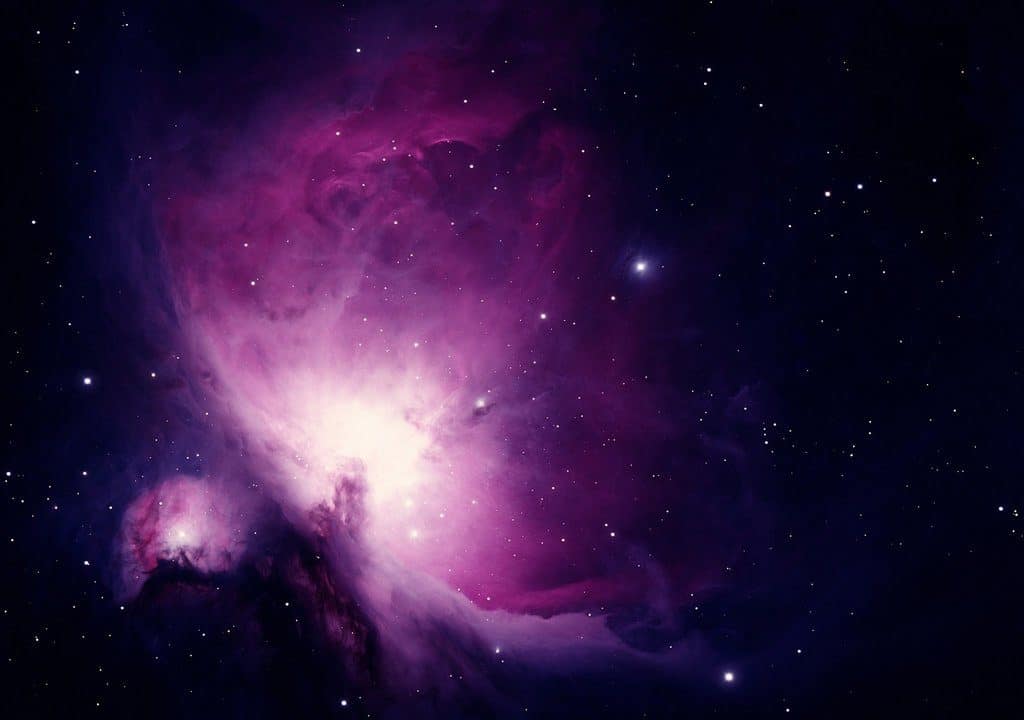The Orion Constellation has been the subject of intense recent research, thanks to the advanced technology of telescopes like APEX and Herschel. Observations in submillimeter wavelengths have allowed scientists to penetrate the Orion Molecular Cloud, revealing internal structures and star formation processes. These studies have identified protostars in early stages, providing a detailed view of how stars are born and evolve in our galaxy.
The APEX Telescope Transforms Our View of the Orion Constellation
The Orion Constellation has always fascinated both professional astronomers and enthusiasts. However, the latest image obtained in submillimeter wavelengths, combined with visible light observations, reveals an even deeper and more captivating landscape.
The APEX Telescope and Its Importance
Firstly, it is important to highlight the crucial role of the APEX (Atacama Pathfinder Experiment) Telescope, located at an altitude of 5,000 meters in the Llano de Chajnantor, in the Chilean Andes.
Its special instruments, particularly the LABOCA camera, are capable of observing submillimeter wavelengths.
Therefore, the telescope captures the faint glow emanating from extremely cold dust grains, whose temperature is just about ten degrees above absolute zero.
Consequently, this capability allows it to penetrate the veil of the Orion Molecular Cloud and offers a surprising view of the internal structure of these dark regions. The dust, which in visible wavelengths hides star nurseries, becomes phosphorescent under the submillimeter gaze, displaying lush filaments and gas contours.
The Hidden Loop: The Orion Nebula
APEX observations are not limited to a static panorama. Instead, they are revealed as an orange arc or loop that underscores the presence of extended gas and dust in the Orion constellation.
This faint curve, invisible to the naked eye, highlights how stellar winds ejected from young stars interact with the cloud. Precisely, these winds deform the surrounding material and generate a kind of bubble whose contour is accentuated in submillimeter images.
Additionally, this gigantic “ribbon” is dotted with clusters where future stars are born. In Orion, these localized condensations represent the places where matter begins to accumulate and gravitationally collapse. In fact, they are the precursor to future stars that, over time, will transition from mere points in the telescope images to shining suns.
That said, it is impossible to talk about Orion without mentioning its most iconic jewel: the Orion Nebula (Messier 42). Known for its brilliance in the sky, this nebula stands out as one of the most active and closest star-forming regions to our solar system. There, massive stars ignite incessantly, emitting radiation and stellar winds capable of dispersing some of the surrounding gas.
Subsequently, newly formed stars become exposed amidst bright arcs and elongated structures that make up the nebula. Undoubtedly, it is a true cosmic laboratory where we can study, practically in real-time, how these celestial bodies are born and evolve.
Protostars and Recent Discoveries
Similarly, in joint studies between APEX and the Herschel Space Telescope of the European Space Agency (ESA), around fifteen bright objects have been identified in very long wavelengths. These points are likely protostars in their youngest stage, a moment when the gas cloud begins to collapse but the core has not yet ignited sufficiently to emit large amounts of visible radiation.
Therefore, these findings not only open a unique window into the early evolution of stars but also strengthen the idea that the Orion constellation harbors countless secrets yet to be unveiled. Additionally, these pioneering discoveries reinforce the importance of high-technology observatories located in extreme regions like northern Chile, where the dry atmosphere and altitude notably improve the quality of observations.
Meanwhile, we must emphasize the fundamental role of the European Southern Observatory (ESO). With cutting-edge facilities in La Silla, Paranal, and Chajnantor, this institution supports the work of astronomers worldwide. Thanks to collaboration with other agencies and countries, their telescopes track and delve into distant regions, seeking every clue to help us better understand how, when, and why stars form.
Several current ESO projects expand our knowledge of Orion. One of the most ambitious is the Extremely Large Telescope (E-ELT), still under construction, which promises to achieve unparalleled resolution. This resolution will ultimately bring us closer than ever to the dusty corners where stellar embryos grow.
A Promising Future
A deep understanding of the Orion Molecular Cloud impacts our global comprehension of the Milky Way, as similar regions extend in all directions within the galaxy.
Recent data, combined with more sophisticated analysis techniques, suggest that star formation is a more complex process than previously thought. Furthermore, each discovery raises new questions about the influence of gas currents, shock waves, and the dynamics of interstellar dust.
It is equally important that this research inspires the next generation of scientists. Studying the bubbles and filaments in Orion allows students and young astronomers to work with cutting-edge information. Moreover, the scientific community eagerly shares these advancements, facilitating international collaboration.
For those of us who wish to understand our place in the cosmos, the Orion Molecular Cloud stands as a reminder of the fundamental processes that have forged suns and planets, including our own home in the Milky Way. Ultimately, future missions and telescopes, in combination with the tireless work of hundreds of astronomers, will continue to unveil the hidden magic in these dusty corners of the sky.
José G Contreras — Constellations and Space





